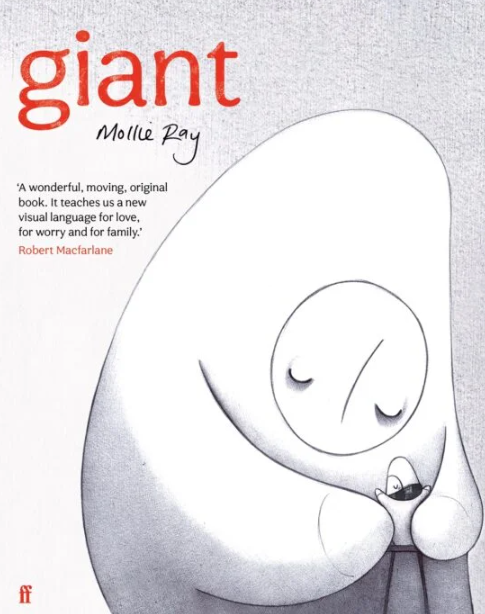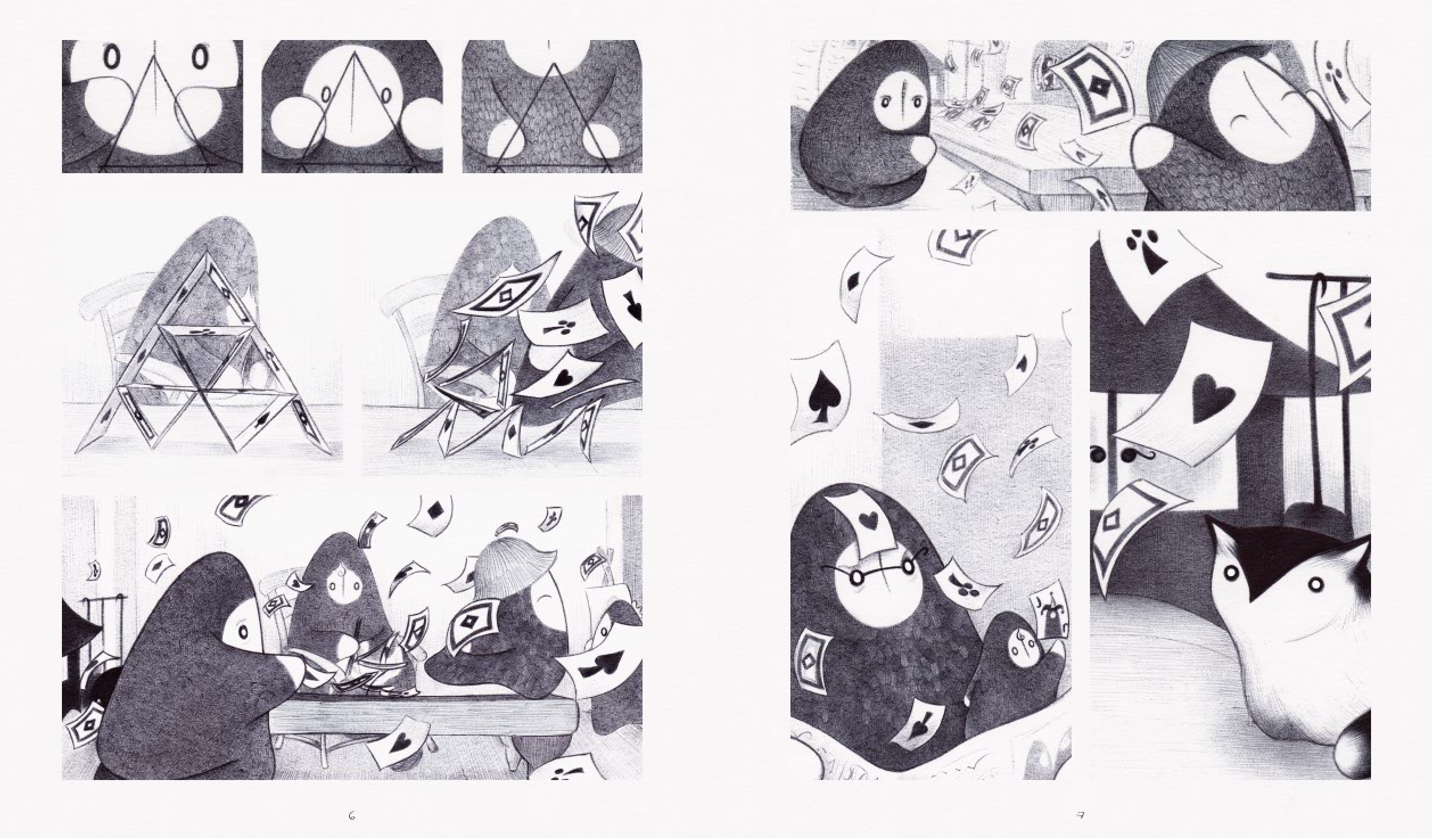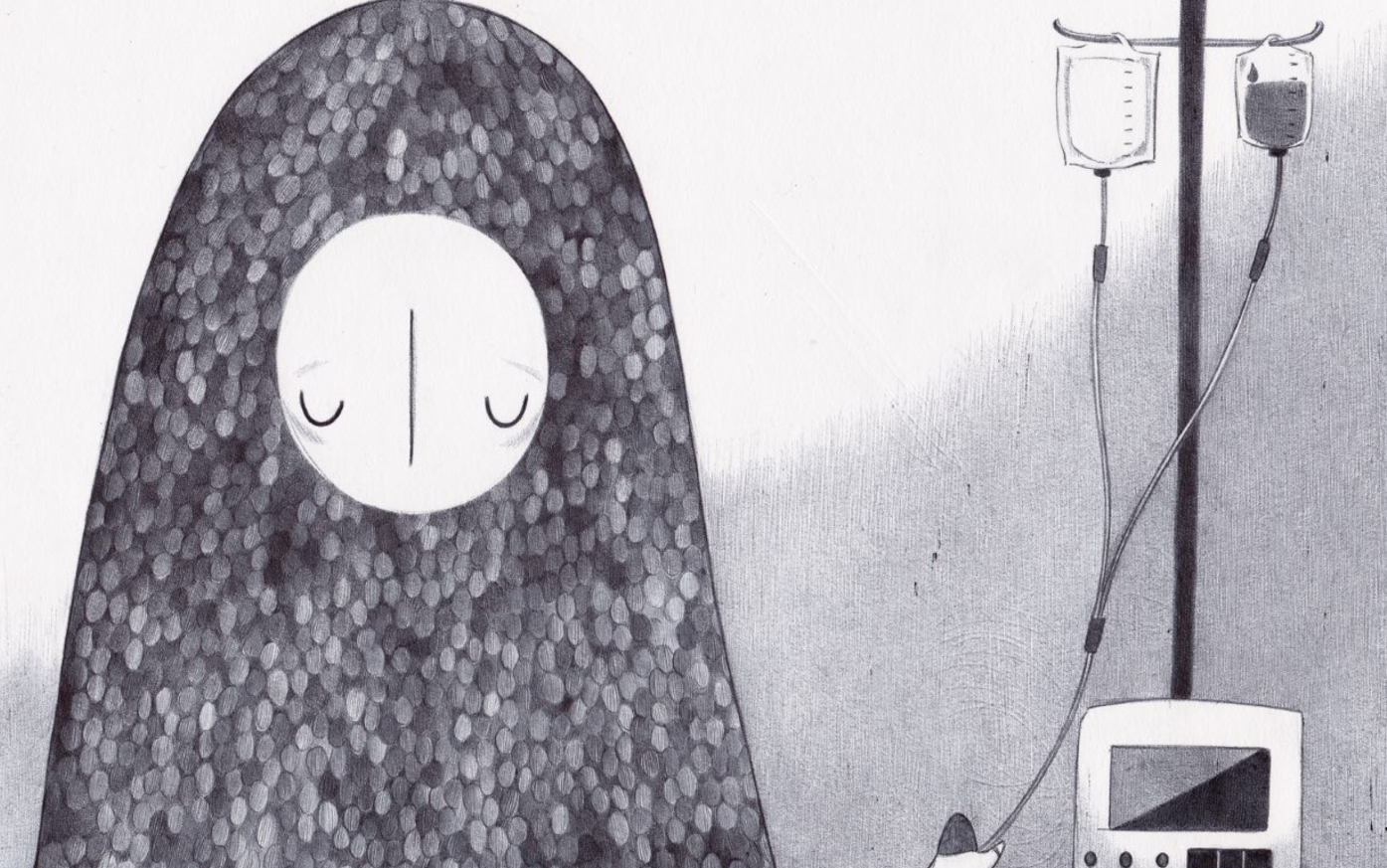Comic artist and illustrator Mollie Ray talks about the process of creating a silent comic, ahead of her debut Giant.

Why silent comics are great:
I find effective wordless storytelling to be a stroke of magic. In silence we find sensitivity; in demanding our full attention, in a story of pictures, we find ourselves immersed.
My favourite thing about silent comics is that they are interpretive. We narrate the story with our own understanding of what is being shown to us, projecting our own experiences onto it. In turn, this makes the story more relatable to the individual reader. Crossing personal experience, but also beyond the barriers of spoken language – in terms of what we can express with words, but also beyond global language barriers.
There is a lovely opportunity as the reader (or the creator), to enjoy finding (and planting) little secrets alongside the main plot, and the silent medium lends itself beautifully to this. The childlike discovery of spotting something the next time you read it again, like unearthing treasure each time.
With all of that in mind, does the story you want to tell lend itself to being silent?
Just because silent comics are awesome, doesn’t mean your story wants to be silent. So, as a creator how do you determine if your story lends itself to being wordless? You need to ask yourself some questions – generally it comes down to intuition. Does it feel right, or does it feel like you’re going against an instinct to articulate with words, that may be more effective in this case? You may need to experiment – analyse other silent comics to get a sense of the techniques used and have a go. Try laying out a sequence with images and text, and then try the same section without words, thinking about how you might articulate what you need to without the aid of text. It may be more movement focused or determined by facial expressions and body language. Can you get across all you need to propel the story forward, with this focus alone? It will completely depend on the type of story you wish to tell, as to how best to tell it. Does the plot contain immense detail, with lots of necessary information to follow in order to understand it? In which case, it probably wouldn’t make sense to make it silent. If you have a simple to follow plot but with immense complexity in the possibility, that lends itself to being open ended and interpretive, perhaps more emotion or thought driven than plot driven, then the medium of silence may lend itself beautifully. Remember that there is also the option to use a balance of silence and words across the span of a book – a section of wordless narrative could work as a poignant contrast again sections brimming with dialogue, for example.

If you’re gonna do it, do it properly
Take the opportunity to embrace what can be done beautifully with silence. Visual metaphors. Interpretive scenes. Relatability through simple character design and landscapes.
There will be challenges you come up against in its design. It’s going to demand the full attention of the reader and may be less natural for a lot of people to read, so it needs to be as clear as possible. I always like to tell myself with making silent comics: simple plot, complexity in the detail. You don’t have words to lean on for explaining where you are, who you are, what time it is, therefore you may need more space to tell a story. Thumbnails have never been more important, show it to people before committing, see what they take from it. Is it clear to them as well as it is to you? Enjoy planting details that aren’t essential to the story that people might miss, or might not. Just make sure the things they need to know are extremely clear.
Another thing to bear in mind as a creator of a silent comic, is that visual consistency has never been more important, because there is nothing else for the reader to go off. Can you still tell at the end of the book that you’re looking at the same character you met at the start of the book? Or have their eyes changed, and their iconic, identifiable accessory gone missing?
Really lean into what you can do visually – for example: movement. I like to imagine my comic as an animation, capturing scene to scene as though a storyboard. What would be moving that you could focus in on to enhance the mood? (For example, focusing on the swaying of the grass for 2-3 panels, what effect does this have on the story?)

Facial expressions, body language, actions, interactions, all have to be loud and clear. Similarly to the plot, you can be subtle with the details, but you need to be loud with the essentials. I recommend getting experimental with the details – it’s a fun way to mess around and create different effects, without disturbing the main plot (for example, in Giant, page 105, I chose to flip the panel upside down. This was a fun way of showing that ‘on the flip side’, a lovely thing can also bring deep worry and protectiveness: however, you don’t need to understand this creative decision to follow the story).
With drafting out a silent comic, and indeed any book, there is likely going to be a process of ‘killing your darlings’. What I mean by this, is that there will be scenes, characters etc. written into the plot, that are nice to look at, but don’t propel the story forward or worse, confuse things. Again, I recommend showing the drafts to other people – what do they make of it? Do they follow the story, or are there unnecessary sections that throw them off? Remember you can pocket ideas for later projects, you don’t have to spend all your gold on this one.
My last piece of advice, and probably the most important piece of advice I can give, is allow yourself to experiment before committing to more finished looking work. Allow yourself to play without being self-conscious of your creation. You wouldn’t tell a child drawing that what they’re making is no good, give yourself the courtesy to enjoy the process without being unnecessarily critical. Have fun, edit later.
Mollie Ray is a Lancaster-based comic artist and illustrator. Ray's debut graphic novel 'Giant' will be published in 2024 with Faber and Faber. In 2019, she graduated from The University of Edinburgh with a First-Class Honours degree in Illustration. Her work has been featured by Creative Boom, The AOI and Broken Frontier's 'Six To Watch In 2021'. She has also done work for the BBC in support of David Attenborough's Wild Isles series and self-published multiple short-form comics.
Comments